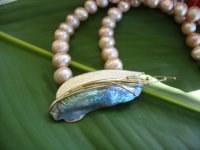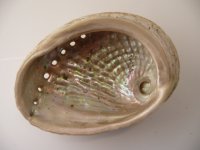SteveM
Well-known member
- Joined
- Jan 29, 2007
- Messages
- 2,112
The issue raised has nothing to do with placement in this thread, rather the unqualified use of the term 'pearl' in the marketing of paua mab?.
The questions from my prior post remain:
Is this an innocent and harmless usage by professionals who supposedly know better, or is it that mab? from NZ is considered a game with its own rules? Has the marketing by Eyris Blue been so successful as to persuade those normally skeptical and critical among us to look the other way? Does Douglas from Guaymas refer to his P. Sterna mab?s as 'pearls' (cultured or otherwise)?
The questions from my prior post remain:
Is this an innocent and harmless usage by professionals who supposedly know better, or is it that mab? from NZ is considered a game with its own rules? Has the marketing by Eyris Blue been so successful as to persuade those normally skeptical and critical among us to look the other way? Does Douglas from Guaymas refer to his P. Sterna mab?s as 'pearls' (cultured or otherwise)?






